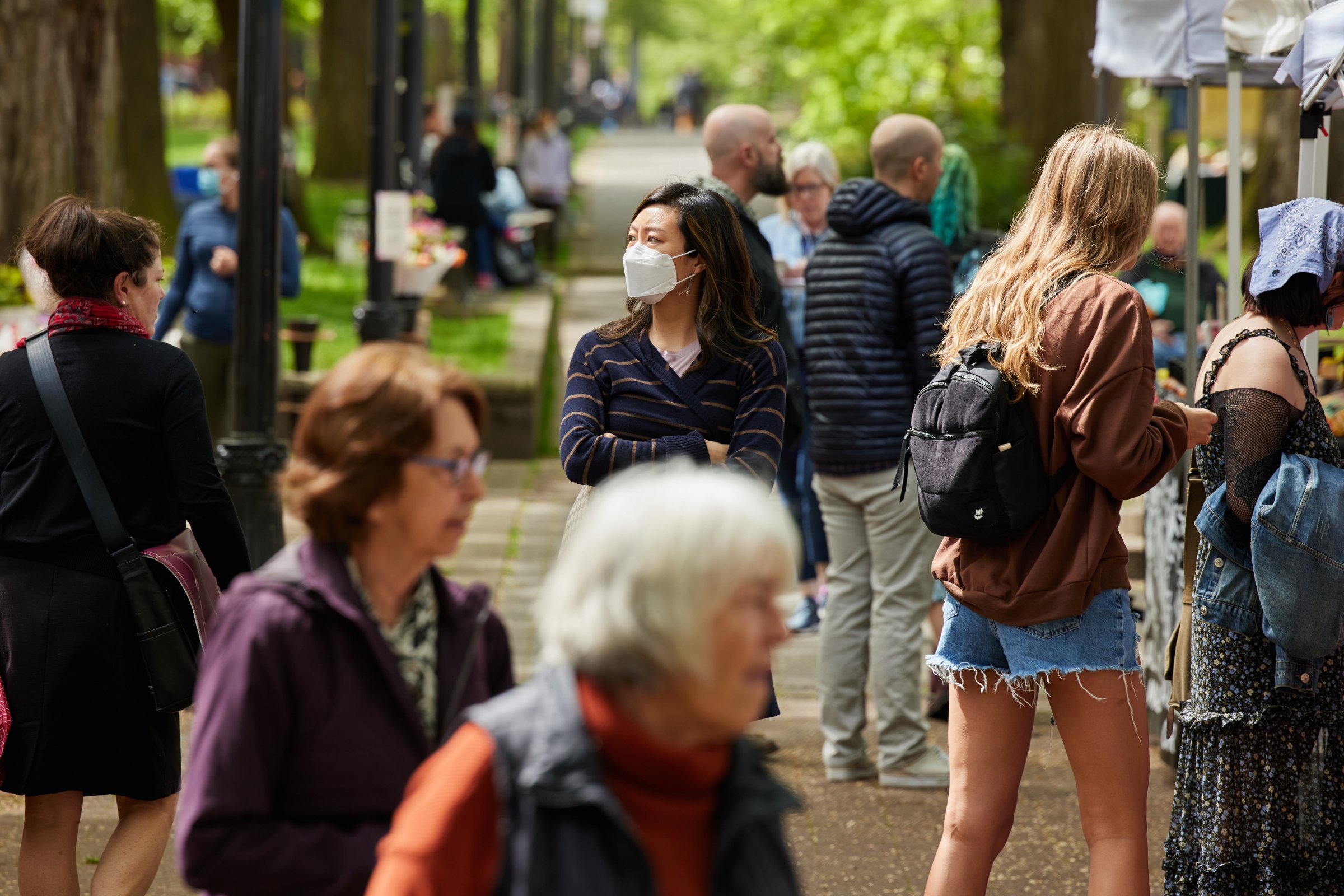
When the pandemic first began, COVID-19 seemed to lurk around every corner, so it came as a big relief when scientists established that the virus doesn’t easily spread outdoors. This summer, however, that feeling of relative safety has come into question. Now that the BA.5 subvariant is driving a new wave in the U.S., can people count on the open air to keep them safe?
The truth is that being outside has never been a sure way to avoid COVID-19 transmission—especially at crowded events, like music festivals, which have been linked to outbreaks in the past. “We certainly hear, in our study, of people who pretty clearly were infected outdoors, so it happens,” says Dr. Donald Milton, professor of environmental health at the University of Maryland School of Public Health, who is principal investigator of an ongoing study on COVID-19 transmission. Of course, “it’s still a lower risk than indoors,” but Milton does not feel comfortable in every outdoor situation. “I didn’t go to the fireworks on July 4, and I have not been in any crowds,” he says. “My outdoor activities mostly consist of exercising, riding a bike, walking, and jogging.”
BA.5 seems to evade immunity from vaccines and past infections more easily than past subvariants, which experts say increases risk no matter where you are. “We’re more susceptible hosts, and we’re more susceptible whether we’re inside or outside,” says Dr. Duane Wesemann, an associate professor at Harvard Medical School and an immunologist at Brigham and Women’s Hospital.
While scientists are still learning about BA.5, it’s increasingly clear that compared to past variants, it has advantages that help it bypass the immune system’s defenses. Like other Omicron subvariants, BA.5 has developed new mutations—in this case, in the spike protein, the part of the virus that binds to cells—which may help it to evade immunity, explains Bing Chen, an associate professor of medicine at Harvard Medical School and Boston Children’s Hospital who studies molecular medicine. “Our antibodies are a little less effective against BA.5 compared to BA.1 and Delta,” he says.
BA.5’s increased transmission and our diminished immune defenses mean that COVID-19 transmission outdoors has become more likely. But that doesn’t mean that being outdoors isn’t going to provide some protection—especially if you also take other precautions. As always, context matters. Being in the open air and away from other people is safer than being in a crowd with worse air circulation—like in a packed baseball stadium without a breeze, says Milton. “Outdoors remains a much lower-risk setting than indoors,” says Linsey Marr, professor of civil and environmental engineering at Virginia Tech. “Transmission outdoors is most likely to occur in close, face-to-face conversation. There’s also the possibility of transmission if you happen to be close enough and downwind of someone who is infected.”
The same precautions that keep you safe indoors can also help outside, including avoiding crowds and wearing a mask when you’re with other people. Being up to date on COVID-19 vaccinations can also make you safer, since the shots trigger the immune system to develop multiple types of defenses against COVID-19, says Wesemann. While the virus is increasingly good at getting around the neutralizing antibodies—which help prevent people from getting infected in the first place—vaccines also trigger longer-lasting types of immune responses. In the end, that means that vaccinated people who get infected with COVID-19 are less likely to become very sick or die from the disease—no matter where they were infected.
More Must-Reads From TIME
- The 100 Most Influential People of 2024
- Coco Gauff Is Playing for Herself Now
- Scenes From Pro-Palestinian Encampments Across U.S. Universities
- 6 Compliments That Land Every Time
- If You're Dating Right Now , You're Brave: Column
- The AI That Could Heal a Divided Internet
- Fallout Is a Brilliant Model for the Future of Video Game Adaptations
- Want Weekly Recs on What to Watch, Read, and More? Sign Up for Worth Your Time
Contact us at letters@time.com